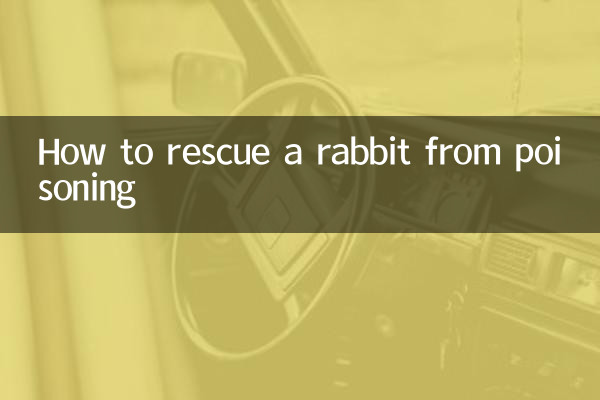How to rescue a rabbit from poisoning
Recently, requests for help and discussions about pet rabbit poisoning have become popular on social media. Many rabbit owners are at a loss because of a lack of first aid knowledge. This article will combine hot topics and structured data on the Internet in the past 10 days to explain in detail the rescue methods for rabbit poisoning.
1. Common causes of rabbit poisoning

According to veterinarians and pet forums, the main causes of rabbit poisoning include ingestion of poisonous plants, chemicals or spoiled food. The following are the high-risk substances for rabbit poisoning that have been hotly discussed in the past 10 days:
| Cause of poisoning | Proportion (%) | Typical symptoms |
|---|---|---|
| Poisonous plants (such as pothos, lilies) | 45 | Vomiting, diarrhea, convulsions |
| household cleaners | 30 | Drooling and difficulty breathing |
| spoiled food | 20 | Bloating, lethargy |
| Others (such as pesticides) | 5 | Dilated pupils, coma |
2. Emergency rescue steps
If symptoms of poisoning are found in rabbits, the following measures need to be taken immediately:
1.Isolate the source of poison: Quickly remove suspicious objects from around the rabbit to avoid further contact.
2.Keep airway open: Check whether there is any residue in the mouth, and raise the head slightly to prevent suffocation.
3.Contact your veterinarian: Call the pet hospital as soon as possible and explain the poisoning substances and symptoms (take photos if there are packages or samples).
4.Emergency treatment: If the accidental ingestion occurs within 30 minutes and there are no convulsions, a small amount of activated charcoal can be fed (veterinary guidance is required).
3. Key points of care after poisoning
After rescue, the rabbit's condition needs to be closely observed. The following are key data for care:
| Observation indicators | normal range | Hazard value |
|---|---|---|
| body temperature | 38.5-40℃ | <37℃ or>41℃ |
| heart rate | 120-150 times/minute | <80 times or>180 times |
| water intake | 100-300ml/day | Not drinking water for 24 hours |
4. Preventive measures
1.environmental inspection: Clean rabbit activity areas regularly and avoid placing toxic plants or chemicals.
2.Diet management: Fresh hay and special rabbit food are provided, and human food needs to be strictly selected.
3.First aid kit preparation: Keep activated charcoal, saline and other emergency supplies for pets at home (please consult your veterinarian for a specific list).
5. Recent hot topics
On social media, there has been a surge in discussions on topics such as #RabbitEatsChocolate# and #How to induce vomiting in a rabbit. Experts remind: Rabbits have poor metabolism, and common human foods such as chocolate and onions are far more toxic to rabbits than cats and dogs. Do not blindly try folk remedies.
Through the above structured data and steps, we hope to help you deal with rabbit poisoning emergencies. If symptoms persist or worsen, be sure to seek medical attention immediately!

check the details

check the details